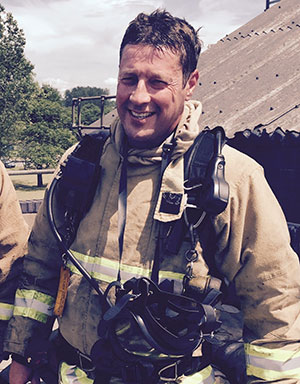As with other government data recorded in relation to fire service prosecutions, the statistics detailing the types of premises and the number of prosecutions recorded have to be treated with some caution. We have looked at the government statistics provided for the period March 2009 to March 2019, there being no information in relation to prosecutions between 2006 and 2009. We have added information in relation to prosecutions for which we have personal data between those dates, but this does not account for all prosecutions which took place before March 2009*.
As the Fire Safety Order was never intended to apply to domestic premises, it is perhaps surprising that over a quarter of all prosecutions brought under the Order since 2009 involve an element of domestic living accommodation (see HMOs, purpose-built and converted flats).
Prosecutions involving HMOs, flats, hostels and other sleeping accommodation account for 35% of all cases brought before the courts.
| Type of Premises | Number of Prosecutions (By premises)* | % |
| Shops | 123 | 17.8 |
| HMOs | 120 | 17.4 |
| Licensed premises | 102 | 14.8 |
| Hotels | 84 | 12.2 |
| Other sleeping accommodation | 60 | 9 |
| Factories or warehouses | 43 | 6.2 |
| Houses converted to flats | 30 | 4.3 |
| Care homes | 29 | 4.2 |
| Purpose built flats | 27 | 3.9 |
| Other premises open to public | 22 | 3.1 |
| Other | 22 | 3.1 |
| Offices | 9 | 1.3 |
| Hostels | 7 | 1 |
| Schools | 7 | 1 |
| Public buildings | 4 | 0.6 |
| Further education | 1 | 0.1 |
| Hospitals | 0 | 0 |
| Total | 690 | 100 |
In the case of “other sleeping accommodation”, further information is required to provide the statistics with more meaning. When you remove domestic premises, HMOs, flats, hostels, care homes and hotels (which I presume includes boarding houses and AirBnBs and other holiday accommodation) it is not clear at all what type or range of premises this category applies to. Yet it accounts for almost 10% of all prosecutions.
As stated in the FSO Consultation paper in 2002, when the Order was first proposed, its purpose at that time, was to reform the law relating to general fire safety in ‘non-domestic’ premises. These figures continue to reaffirm my belief that, despite agreements held between fire services and local Borough Councils in respect of joint investigations and cooperation, it is predominantly the Fire Safety Order and not the Housing Act that has been used to bring ‘rogue landlords’ to justice.
I suspect, following the Grenfell Tower tragedy in June 2017, that sleeping accommodation will continue to be the most inspected, enforced against and prosecuted premises over the next few years. Despite the Tower being deemed a ‘medium risk’ prior to the tragedy, similar premises will now be considered as ‘high risk’. Looking at the figures on a year by year basis, the impact of Grenfell can already be seen. In the 8 years leading up to 2017, there were 12 prosecutions relating to purpose-built flats, yet in the 2 years following Grenfell there were 14 prosecutions relating to similar premises.
Strangely, however, the comparative number of prosecutions in relation to ‘houses converted to flats’, have remained constant. The 8 years prior to 2017 show 24 prosecutions (3 per year on average) with 6 prosecutions in the 2 years since Grenfell.
The national statistics are in many ways at odds with my own data from 200 of these cases. For example, I have been involved with many cases involving living accommodation above a shop, but I would have recorded these premises as ‘multiple use’. They are clearly commercial and domestic use premises. This category is not used within the government statistics. If fire services have recorded these types of premises as “shops” within their returns, then the statistics do not tell the whole picture. I have only been involved with a handful of prosecutions involving solely shop premises yet it would appear from the national statistics that shop premises are the most Prosecuted premises as they represent almost 18% of all prosecutions.
There have been no prosecutions in relation to hospitals. I find this surprising as I have advised in a number of what appeared to be serious cases involving hospital premises. Whether there is any public interest in prosecuting an NHS Trust is a moot point, but clearly, such premises involve a large number of extremely vulnerable relevant persons.
The same could be said about schools which represent 1% of all prosecutions.
There also appears to be an increase in prosecutions relating to care homes in recent years. In the 7 years leading up to 2015/16, there were 15 prosecutions involving care homes, whereas in the last 3 years there have been such 14 prosecutions. I thought that there would be more prosecutions relating to care homes, given their complexity, the vulnerable nature of their residents, and the fact that I have been involved in 14 care/nursing home prosecutions myself.
In my view, the description of the types of premises is another area where the government statistics could be more helpful. Categorising premises in such vague terms prevents any really valuable analysis the purposes of prioritising risk. As can be seen from the figures, the vague categories such as “other sleeping accommodation”(9%), “other” (premises-3.1%), “public buildings”, “other premises open to the public”(3.1%) and “shops” (17.8%) account for almost a third of all prosecutions, yet it is impossible to see any trends or easily identified risks from those descriptions.
But what is most significant to me, is that the Fire Safety Order is about to be reviewed in the light of the Grenfell tragedy, and although the Grenfell fire was responsible for a significant number of deaths, the prosecutions in relation to purpose-built flats account for only 4% of the total number of prosecutions under the Order.
The recently published Fire Safety Bill clarifies the position in relation to the often misunderstood responsibilities regarding flat doors in common areas and deals with the cladding issues identified in the Grenfell Inquiry. It also allows the government to introduce further amendments and measures necessary to assist in the enforcement of fire risk management responsibilities.
Any review of the Order should, of course, take account of the lessons learned from Grenfell, but it should also take account of the risks inherent in premises other than high-rise, purpose-built flats, and which account for 96% of all prosecutions and, no doubt, the significant majority of all enforcement issues which have arisen since the Order came into effect in October 2006.



